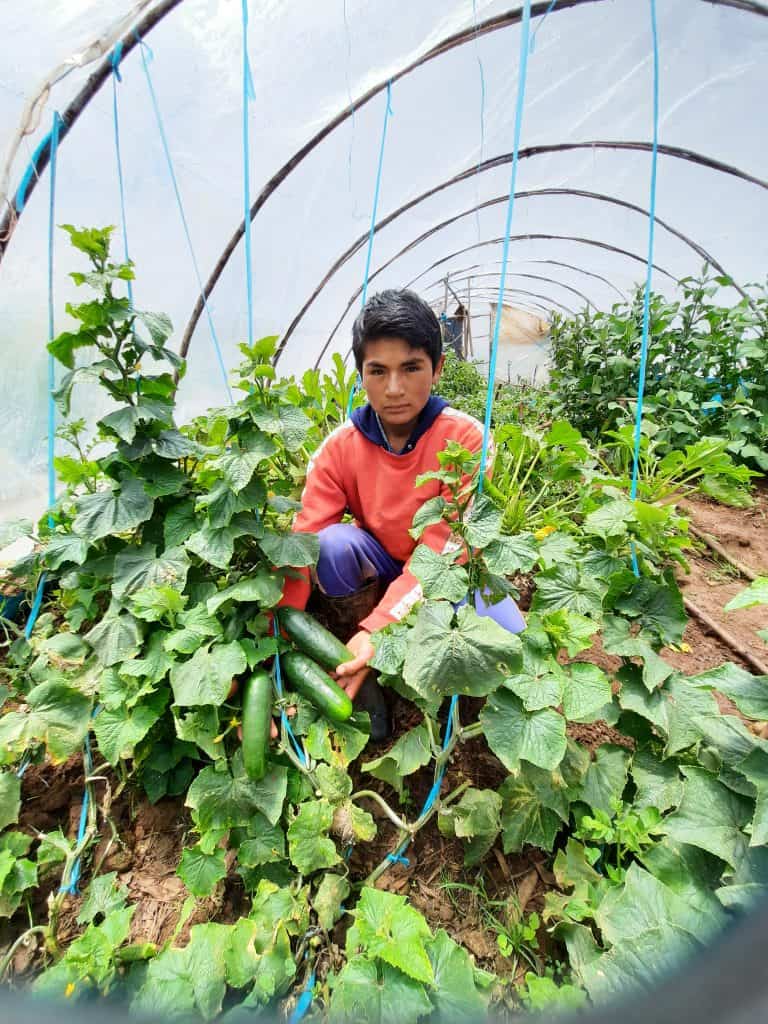Traditional farming techniques have demonstrated their enduring effectiveness by employing methods that enhance crop production while promoting environmental sustainability and reducing the environmental impact.
Fundamental techniques such as crop rotation, intercropping, and natural pest control contribute significantly to the preservation of biodiversity, sustainable agriculture, and the support of local economies.
These time-honored practices are being integrated with modern technology, organic farming, and regenerative agriculture to secure a sustainable future for agriculture.
The synergy of tradition and innovation, including permaculture principles and sustainable development, has the potential to foster a healthier planet.
What Are the Techniques Used in Traditional Farming?
.jpg_00.jpeg)
Traditional farming encompasses a range of techniques that have been employed for generations to support sustainable agriculture, including traditional ecological knowledge and regenerative practices, to improve food production systems.
These methods, deeply rooted in cultural practices and traditional ecological knowledge, are designed to maintain ecological balance, promote food sovereignty, and foster environmental stewardship and habitat restoration.
Techniques such as crop rotation, intercropping, and companion planting enhance soil health and biodiversity, thereby ensuring that farming practices remain resilient to the impacts of climate change.
Through the implementation of natural pest control and mulching strategies, farmers can improve the sustainability of their food production systems, ultimately contributing to the preservation of local food systems and advancing ecological farming principles.
1. Crop Rotation
Crop rotation is a fundamental agricultural practice that involves the systematic alternation of crop types cultivated on a specific parcel of land over time. This method is employed to enhance soil health and prevent nutrient depletion.
This practice not only aids in distributing nutrient demands among various plants but also plays a critical role in improving soil structure and fertility. For example, legumes possess the ability to fix nitrogen in the soil, which subsequently reduces reliance on synthetic fertilizers.
Furthermore, rotating crops disrupts the life cycles of pests and diseases, resulting in a natural reduction of their populations. This approach to pest management contributes to a more sustainable farming system, fostering agricultural resilience and promoting ecosystem balance.
Such factors are essential for the longevity and productivity of agricultural systems.
2. Intercropping and Mixed Cropping
Intercropping, a key component of integrated farming systems, is the practice of cultivating two or more crops in close proximity, which promotes biodiversity and can enhance yields through beneficial ecological interactions.
This method not only optimizes land use but also encourages positive relationships among various plant species, thereby supporting a more resilient agroecosystem.
By integrating multiple crops, farmers can effectively reduce the prevalence of pests and diseases, which minimizes the reliance on chemical inputs and enhances soil health.
Intercropping also facilitates the efficient use of resources, such as water and nutrients, contributing to a sustainable agricultural model that prioritizes environmental integrity and water conservation.
Furthermore, these diverse cropping systems attract pollinators and other beneficial organisms, fostering a balanced ecosystem that supports long-term agricultural productivity.
3. Companion Planting
Companion planting is a time-honored agricultural practice that involves cultivating different crops in close proximity to one another to achieve mutual benefits, such as natural pest control and improved growth conditions.
This age-old technique promotes ecological balance by fostering a diverse plant environment that attracts beneficial insects while deterring harmful pests. For example, the pairing of tomatoes and basil not only enhances the flavor profile of the tomatoes but also serves to repel common pests such as aphids.
Likewise, the cultivation of marigolds alongside vegetables can offer additional protection against nematodes and various insect pests.
These advantageous combinations contribute to improved soil health and increased overall yield by nurturing a vibrant ecosystem. By employing this method, farmers can reduce their dependence on chemical pesticides, thereby adopting a more sustainable approach to agriculture while simultaneously promoting environmental stewardship.
4. Natural Pest Control
Natural pest control employs ecological methods to manage pests without the use of synthetic chemicals, with the objective of establishing a balanced ecosystem within agricultural settings. This approach not only safeguards the health of soil and crops but also promotes biodiversity, enabling beneficial insects and organisms to flourish.
By implementing integrated pest management strategies, farmers can effectively monitor pest populations, utilize biological controls, and rotate crops, all of which serve to disrupt pest life cycles.
Agroecological strategies further enhance these practices by underscoring the significance of preserving natural habitats and fostering the presence of predatory species that contribute to natural pest control.
As these methods prioritize sustainability and adhere to the principles of ecological farming, they provide a comprehensive solution to pest management that benefits both the environment and agricultural productivity.
5. Mulching
.jpg_01.jpeg)
Mulching is the practice of covering the soil with either organic or inorganic materials to conserve moisture, suppress weeds, and enhance soil health.
By establishing a protective layer, mulching helps to regulate soil temperature, which is essential for the activity of beneficial microorganisms that facilitate nutrient cycling. This practice not only reduces evaporation, thereby improving water efficiency, but also mitigates erosion, ensuring that soil structure remains intact.
Furthermore, mulching promotes sustainable practices by decreasing the reliance on chemical herbicides and fertilizers, thereby fostering an ecosystem that relies on natural inputs. As a result, this method supports biodiversity in gardens and landscapes, which is critical for effective soil conservation efforts.
Incorporating mulching into gardening and farming practices significantly enhances soil quality, leading to healthier plants and more resilient ecosystems.
Why Is Traditional Farming Important for Sustainability?
Traditional farming plays a vital role in promoting sustainability by preserving biodiversity, enhancing soil health, and supporting local economies.
These factors are essential for achieving long-term agricultural resilience and climate-smart agriculture.
1. Preserves Biodiversity
Traditional farming methods are fundamentally connected to the preservation of biodiversity, as they frequently incorporate diverse crop varieties and heirloom seeds that contribute to a resilient agricultural ecosystem.
These practices are deeply embedded in cultural heritage, reflecting a rich diversity of plants that have been cultivated over generations. For example, heirloom varieties such as Cherokee Purple tomatoes and Blue Lake beans not only provide exceptional flavor but also demonstrate improved adaptability to local climates and pests when compared to modern varieties.
This adaptability enhances sustainable landscapes by promoting soil health and minimizing the reliance on chemical inputs. Traditional farming practices advocate for polyculture, which fosters beneficial interactions among species, thereby enhancing overall ecosystem stability and resilience against the impacts of climate change.
By recognizing the value of these time-honored approaches, communities can play a crucial role in preserving biodiversity for future generations.
2. Reduces Dependence on Chemicals
A significant advantage of traditional farming lies in its capacity to reduce dependence on agrochemicals by employing natural fertilizers and ecological farming practices. This approach not only safeguards soil health but also enhances biodiversity by allowing various beneficial organisms to thrive within the ecosystem.
By implementing strategies such as crop rotation, cover cropping, and organic pest management, farmers can sustain productive yields while promoting sustainable land stewardship. The integration of these alternative practices can substantially diminish water and air pollution, thus contributing to a healthier overall environment.
Furthermore, reducing chemical inputs leads to the production of healthier food products, offering consumers options that are free from harmful residues. Embracing organic farming not only benefits individual farms but also plays a vital role in fostering a greener planet for future generations.
3. Promotes Soil Health
Traditional farming practices promote soil health and soil fertility through methods such as conservation tillage, the application of cover crops, and the use of organic fertilizers. These approaches enhance nutrient cycling and improve soil structure.
Such practices not only mitigate soil erosion but also facilitate water infiltration and moisture retention, which are essential for building resilience against climate change. By prioritizing organic matter, these methods support beneficial microbial communities and increase biodiversity within the soil ecosystem.
Furthermore, integrating crop rotations, agroecological practices, and agroforestry can significantly enhance land fertility, ensuring that agricultural systems maintain productivity over time.
By emphasizing soil conservation in this manner, we establish a foundation for a more sustainable future, where agricultural practices not only yield food but also contribute to the restoration and revitalization of the planet’s health.
4. Supports Local Economies and Sustainable Livelihoods
.jpg_10.jpeg)
By emphasizing local food systems, community-supported agriculture, and sustainable agriculture, traditional farming plays a significant role in supporting local economies and strengthening food sovereignty.
This approach not only enhances the livelihoods of farmers but also promotes a sense of community resilience. When communities prioritize local food systems and sustainable practices, they facilitate the circulation of money within the region, thereby creating jobs and driving economic growth.
Supporting local agriculture also reduces reliance on imported goods, which minimizes environmental impacts and transportation costs. This promotes sustainable food systems and helps in conserving renewable resources.
As a result, consumers benefit from access to fresher produce while contributing to sustainable practices that positively impact the ecosystem. Ultimately, this synergistic relationship between local farmers and their communities fosters a healthier economy, enhances food security, and supports rural sustainability.
How Are Traditional Farming Techniques Being Adapted for Sustainability and Climate Resilience?
Traditional farming techniques are being modified to enhance sustainability through the integration of organic practices, the application of modern technology, and the implementation of sustainable water management strategies, in conjunction with the principles of agroforestry and permaculture.
1. Using Organic Practices and Sustainable Methods
The adoption of organic practices in traditional farming significantly enhances sustainability through the use of natural fertilizers, such as organic fertilizers, and the promotion of ecological restoration.
This approach not only improves soil health but also fosters biodiversity, enabling various microorganisms and beneficial insects to thrive. By refraining from the use of synthetic chemicals, farmers are able to cultivate crops that demonstrate greater resilience to pests and diseases, thereby diminishing the reliance on harmful pesticides.
Furthermore, organic farming techniques often prioritize crop rotation, polyculture, and permaculture principles, which help to restore nutrient balance in the soil and enhance overall fertility. Consequently, this holistic system contributes to long-term ecological viability, ensuring that the land remains productive for future generations while supporting the surrounding ecosystem.
2. Incorporating Modern Technology and Farming Innovation
The integration of modern technology, such as precision agriculture and farming innovation, enables traditional farmers to optimize resources and enhance yields while promoting climate resilience.
By utilizing tools such as drones and soil sensors, farmers can monitor crop health in real time, facilitating more informed decisions regarding irrigation and fertilization. These technological advancements not only improve productivity but also reduce waste, contributing to more sustainable agricultural practices and irrigation techniques.
The incorporation of data analytics and machine learning allows farmers to predict weather patterns and potential crop diseases, thereby equipping them to adapt to changing environmental conditions and reduce environmental impact.
This collaboration between established farming methods and innovative technology represents a significant transformation towards agricultural practices that honor environmental stewardship while addressing the needs of a growing global population.
3. Implementing Sustainable Water Management and Conservation Tillage
The implementation of sustainable water management practices, including water-efficient irrigation and traditional irrigation techniques, is essential for ensuring the longevity of traditional farming systems in the context of climate change.
These practices not only enhance the resilience of agricultural landscapes but also contribute to the preservation of local water resources. Techniques such as rainwater harvesting and the utilization of drip irrigation systems enable farmers to optimize water usage, thereby reducing dependency on unreliable rainfall.
Furthermore, these methods help mitigate the impacts of extreme weather events, which have become increasingly frequent due to climate change. By integrating sustainable water management with agroecological practices, farmers can promote biodiversity, improve soil health, and ultimately support climate-smart agriculture initiatives that prioritize sustainability and food security for future generations. This also involves practices such as conservation tillage and nutrient management.
4. Embracing Agroforestry and Mixed Cropping
.jpg_11.jpeg)
Embracing agroforestry integrates agricultural and forestry practices, fostering sustainable landscapes that enhance biodiversity, support farm-to-table initiatives, and involve mixed cropping systems.
This innovative approach not only improves soil health and water retention but also creates habitats for a variety of species, contributing to a more balanced ecosystem. By incorporating trees and shrubs into farming systems, farmers can enhance carbon sequestration, nutrient cycling, and soil conservation while minimizing chemical inputs, thus adopting more organic farming practices.
The diversity of plant and animal species inherent in agroforestry systems bolsters resilience against pests and diseases, establishing a natural balance that decreases reliance on synthetic pesticides. Ultimately, agroforestry promotes a sense of community through local food production, ensuring that agricultural practices are aligned with environmental stewardship and long-term sustainability. These practices also support traditional knowledge and indigenous farming techniques.
Frequently Asked Questions
What are traditional farming techniques being adapted for sustainability and environmental sustainability?
Traditional farming techniques refer to methods that have been used for generations to cultivate crops and raise livestock. These practices are now being adapted to promote sustainability, such as reducing environmental impact and preserving natural resources through ecological farming and ecological balance.
Why is it important to adapt traditional farming techniques for sustainability and environmental impact reduction?
Traditional farming techniques often involve practices that are harmful to the environment, such as the use of chemical fertilizers and pesticides. Adapting these techniques for sustainability helps to reduce negative impacts and create a more environmentally-friendly approach to farming by implementing agrochemical alternatives and ecological farming practices.
How are traditional farming techniques being adapted to reduce water usage and improve nutrient management?
Traditional farming techniques often use large amounts of water, which can be unsustainable in some regions. Farmers are now adopting practices such as drip irrigation and rainwater harvesting to conserve water and make better use of this valuable resource. Additionally, these methods support better nutrient management and water conservation strategies.
Are traditional farming techniques being adapted to reduce the use of chemical fertilizers and pesticides through agrochemical reduction?
Yes, to promote sustainability, farmers are shifting towards organic methods of farming that reduce the need for chemical fertilizers and pesticides. They are also implementing practices such as crop rotation, intercropping, and integrated pest management to naturally control pests and maintain soil fertility.
How are traditional farming techniques being adapted to promote biodiversity and conservation tillage?
Traditional farming techniques often involve monocropping, which can be detrimental to biodiversity. To promote sustainability, farmers are now using methods such as agroforestry, polyculture, and conservation tillage to create more diverse and resilient farms that support a variety of plant and animal species.
What role do technology and innovation play in adapting traditional farming techniques for sustainability and regenerative practices?
Advancements in technology and innovation have allowed for traditional farming techniques to be adapted in more efficient and sustainable ways. This includes the use of precision agriculture, renewable energy sources, and data analysis to optimize farming practices and reduce environmental impact. These advancements also support regenerative practices and agro-innovation.

My name is Bruno, I have been a writer for 5 years and I work with website creation. My goal is to provide true information to readers. In fact, on this site I write about cultures and traditions, which I have been passionate about since childhood.




